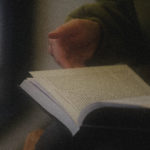In the world of C. S. Lewis biography there are two extremes. On the one hand is hagiography. Lewis was a saint who could do no wrong; any strange views or questionable behaviors must be swept under the rug. Roger Green and Walter Hooper’s C. S. Lewis: A Biography (1974) represents this head side of the Lewis coin.
On the other hand is psychoanalysis. Lewis was a deeply flawed man whose faith in Christ can be “accounted” for by sociological and psychological factors. A. N. Wilson’s C. S. Lewis: A Biography (1990) represents the tail side.
Somewhere in the middle lies George Sayer’s Jack: A Life of C. S. Lewis (1988, 1994). Sayer was a pupil and longtime friend of Lewis’s, and his biography combines the personal insight of Green/Hooper with the critical objectivity of Wilson. That is to say, Sayer is more frank and open than Green/Hooper about the sexual struggles of the early Lewis while refraining, unlike Wilson, from simplistic and reductive Freudian readings of his religious work.
Alister McGrath’s C. S. Lewis—A Life: Eccentric Genius, Reluctant Convert follows in the course set by Sayer. This is especially the case in McGrath’s treatment of Lewis’s decidedly peculiar relationships with Mrs. Moore and Joy Davidman. In both instances, McGrath is frank without being prurient or “gossipy.” He is up front about Lewis’s almost pathological secrecy concerning both affairs and succeeds in de-romanticizing his marriage to Joy without becoming cynical or judgmental.
But reading McGrath is quite different from reading Sayer. Whereas Sayer’s biography is warm and personal, McGrath’s is more objective and removed. Though never dry or academic—to the contrary, he writes in highly readable and lucid prose—McGrath resists taking us too deeply into Lewis’s psyche. Still, unlike Sayer, McGrath grounds his biography in a close reading of the recently published three-volume collected letters of Lewis. So what McGrath loses in personal closeness to his subject, he gains in vivid insight into the workings of Lewis’s mind over the course of his life, career, and spiritual walk.
Reason and Imagination
McGrath, professor of theology, ministry, and education and head of the Center for Theology, Religion, and Culture at King’s College in London, is, like Lewis, a gifted teacher, apologist, and man of letters who, also like Lewis, appeals both to reason and also imagination in his work. And he, again like Lewis, was born in Belfast, Ireland.
This connect between author and subject helps account for three strengths of McGrath’s biography. First, it helps readers understand not only what it meant for Lewis to grow up in Protestant north Ireland but also what it meant to be an outsider in England. Second, it does an excellent job explaining to Americans the role of a tutor in the world of Oxbridge, as well as how academic envy of and scorn for Lewis’s popular work and “antiquated” ways prevented him from receiving an Oxford professorship. Third, it highlights the various influences that formed Lewis the apologist and Lewis the fantasy writer and shows how those two strands intertwine in Lewis’s work and faith.

C. S. Lewis—A Life: Eccentric Genius, Reluctant Convert
Alister McGrath
In C.S. Lewis―A Life, Alister McGrath, prolific author and respected professor at King’s College of London, paints a definitive portrait of the life of C. S. Lewis. After thoroughly examining recently published Lewis correspondence, Alister challenges some of the previously held beliefs about the exact timing of Lewis’s shift from atheism to theism and then to Christianity. He paints a portrait of an eccentric thinker who became an inspiring, though reluctant, prophet for our times.
Alan Jacobs’s The Narnian: The Life and Imagination of C. S. Lewis (2005), which also inhabits Sayer’s middle ground, traces with skill and conviction the beliefs and life experiences that led Lewis to create Narnia. However, his biography is marred by a disturbing (and trendy) tendency to downplay—if not dismiss—Lewis the rational apologist in favor of Lewis the fantasist. McGrath avoids this false dichotomy, giving equal attention and praise to both Lewises and showing how these two dimensions of Lewis’s work complement one another.
As part of his defense of this rich duality, McGrath successfully rebuts critics who claim that when Elizabeth Anscombe “bested” Lewis at a meeting of the Oxford Socratic Club, revealing flaws in his argument that naturalism is self-refuting, the defeated Lewis abandoned rational apologetics for fantasy. As McGrath demonstrates, Lewis accepted Anscombe’s philosophical criticism of Chapter 3 of Miracles in the same manner he accepted the more aesthetic but no less pointed criticism of the Inklings. Indeed, he used Anscombe’s critique to rework and expand Chapter 3—and once he did so, Anscombe was satisfied.
Though McGrath admits that after the encounter with Anscombe Lewis did retreat somewhat from taking on more recent philosophical arguments (like those of Wittgenstein) he hadn’t studied, he didn’t abandon rational apologetics for fantasy. Not only did he continue to publish apologetics essays, but his Narnia books also carried on a strain of imaginative apologetics he’d launched long before with his Space Trilogy—which predated his encounter with Anscombe.
Date of Conversion?
Though I don’t think McGrath’s arguments here will cause undue controversy among Lewis scholars, he does put forth another argument that should provoke discussion and reassessment for many years to come. Whereas nearly all critics, following Lewis’s autobiography Surprised by Joy, place his conversion to theism in the spring-summer of 1929, McGrath, based on his exhaustive analysis of the Lewis correspondence, moves it forward one year.
I find McGrath’s argument compelling and definitive. Indeed, given the fact that in my own lectures on Lewis I’ve long maintained (somewhat inconsistently) the traditional date while nonetheless taking for granted that the death of Lewis’s father in September 1929 influenced his conversion, I am quite pleased by McGrath’s argument! I think that in time his reading will win out, but it will take a long time and will likely never entirely erase the power of the traditional chronology presented in Surprised by Joy.
I was greatly relieved McGrath doesn’t fall into another annoying, if not reprehensible, habit of modern Lewis scholars that mars Jacobs’s biography. Unlike Jacobs, McGrath feels no need to “overapologize” for Lewis’s supposed sexism.
A number of Lewis scholars, guilty of that very “chronological snobbery” Lewis fought so hard to shake off, refuse to acknowledge the possibility that Lewis’s traditional (and biblical) views of marriage and the sexes just might be closer to the truth than our own anti-essentialist belief that masculinity and femininity are social-political constructs rather than God-created realities. Indeed, in A Sword between the Sexes? (2010) Lewis critic Mary Stewart Van Leeuwen goes so far as to argue the older Lewis abandoned a complementarian view of the sexes for an egalitarian one: an argument that not only runs roughshod over Lewis’s strongly held, biblically based views of the sexes but that’s tantamount to saying if Paul were alive today he’d support gay marriage.
Though McGrath doesn’t defend Lewis’s complementarian views, he at least doesn’t pillory or spend inordinate time apologizing for them. He lets Lewis speak for himself, and for that all Lewis scholars should be grateful.




































